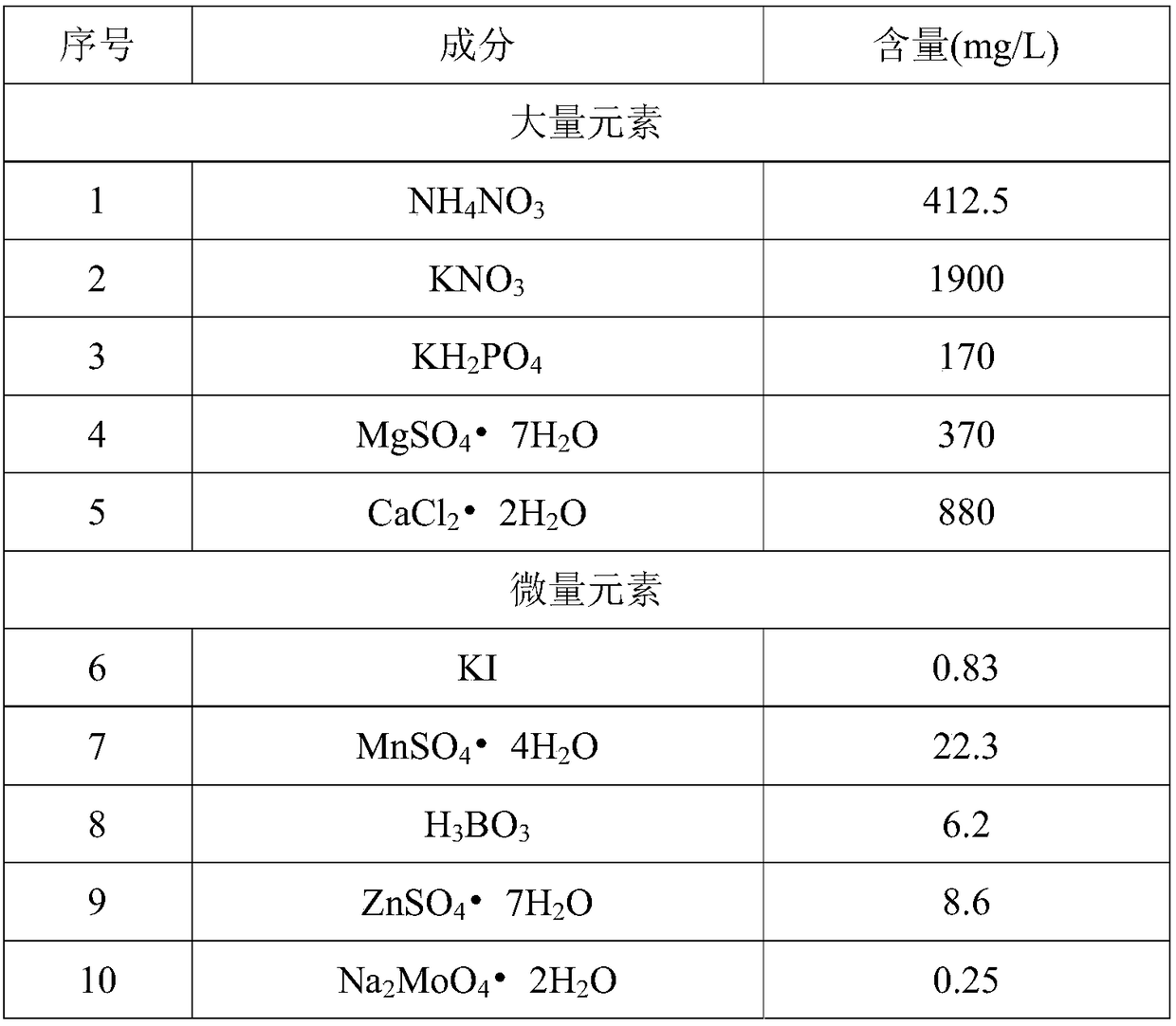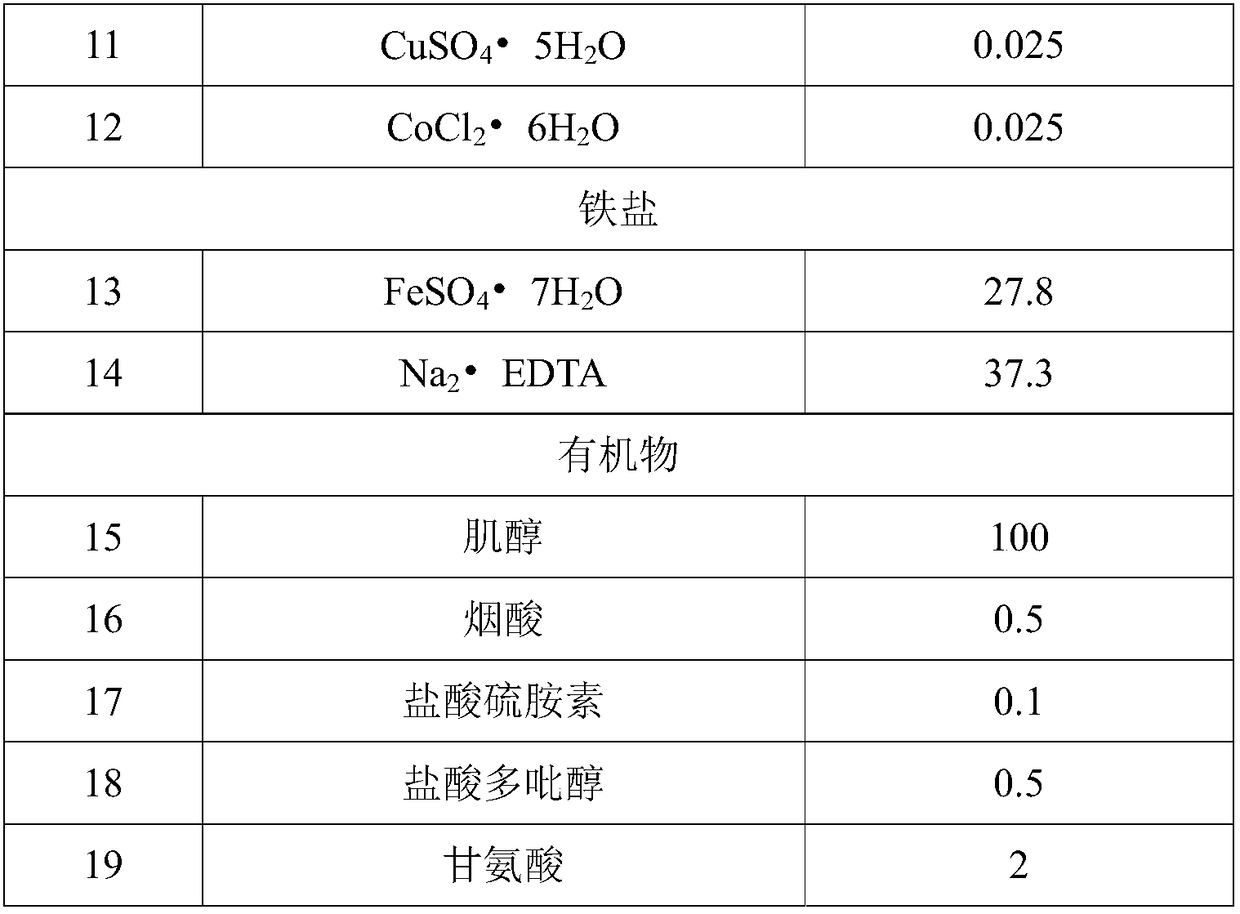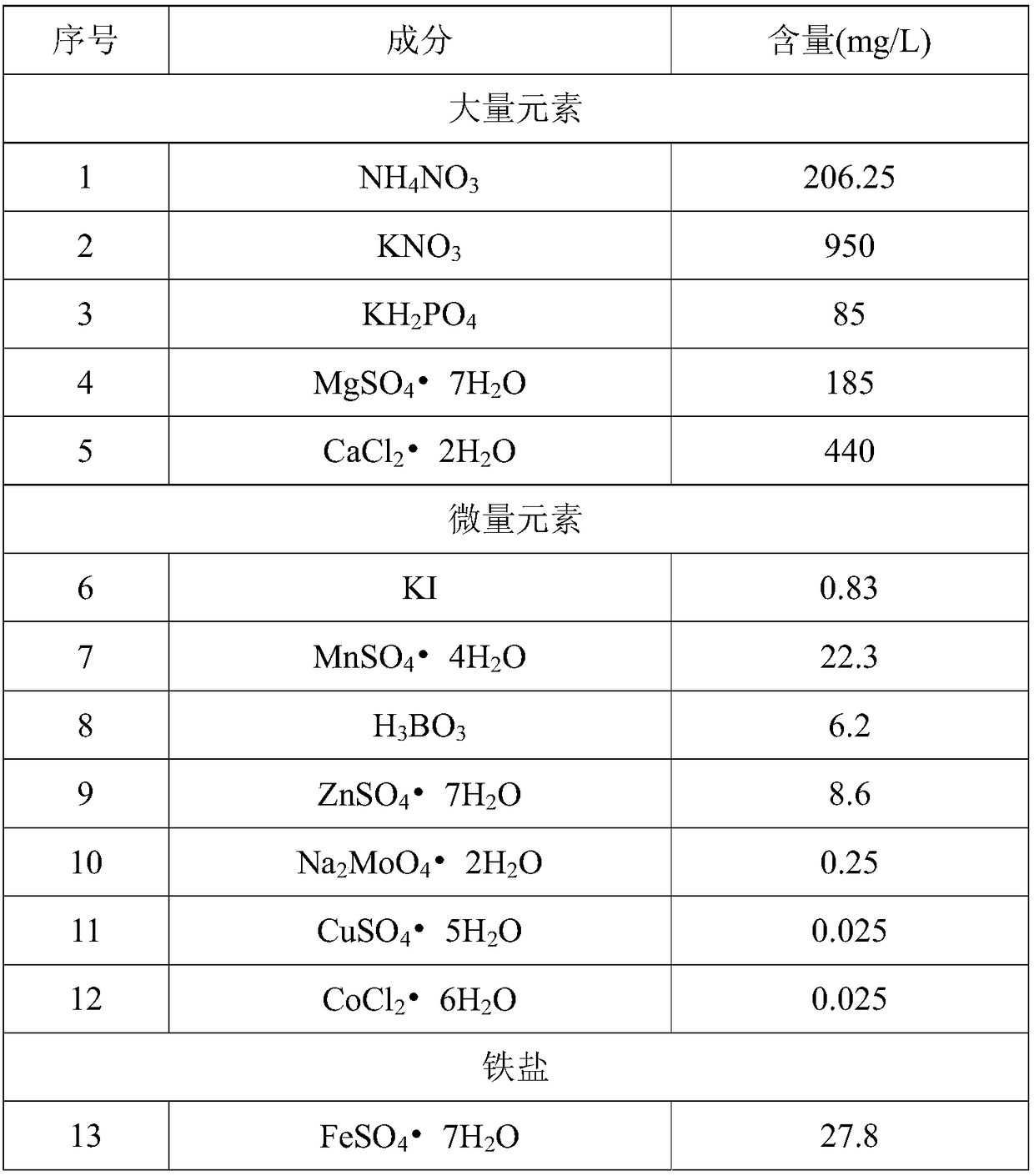A kind of borneol camphor plantlet multiplication and rejuvenation method
A technology of borneol camphor and test-tube seedlings, applied in horticultural methods, botany equipment and methods, plant regeneration, etc., can solve the problems of vitrification, low multiplication coefficient, browning, etc., reduce vitrification and increase multiplication coefficient , the effect of alleviating the problem of browning
- Summary
- Abstract
- Description
- Claims
- Application Information
AI Technical Summary
Problems solved by technology
Method used
Image
Examples
Embodiment 1
[0027] A, Proliferation culture: Cut out the adventitious buds of borneol camphor camphora camphora with a stem length of 1-2 cm, cut off all the leaves, and inoculate the improved MS (doubling of calcium chloride, nitric acid) at the 1 / 3 of the base of the lateral buds. Ammonium was reduced to 1 / 4 of the original concentration) in the medium (Table 1), and additional mitogen 6-BA 1.0mg / L, auxin NAA 0.05mg / L, gibberellin GA 3 0.3mg / L, anti-browning agent AgNO 3 (See photodecomposition) 1.0mg / L, sucrose 30g / L and carrageenan 6.0g / L, pH=6.0. Culture conditions: After inoculation, culture in a dark environment for 3 days (to avoid the decomposition of silver nitrate), then switch to light culture, light intensity 3000lx, light cycle 12h / d, culture temperature 25±1°C, culture cycle 30 days.
[0028] B. Rejuvenation culture: After three generations of continuous multiplication of tissue culture seedlings, transfer to rejuvenation culture, cut out robust adventitious buds and keep...
Embodiment 2
[0036]Compared with Example 1, the culture period in step A was changed to 25 days, and the culture period in step B was changed to 15 days. At the end of the cultivation period, the average proliferation coefficient of the tissue cultured seedlings reached 9.28, and there was basically no vitrification.
Embodiment 3
[0038] Compared with Example 1, the light intensity in steps A and B is all changed to 2000lx. At the end of the cultivation period, the average proliferation coefficient of the tissue cultured seedlings reached 9.07, and there was basically no vitrification.
PUM
 Login to View More
Login to View More Abstract
Description
Claims
Application Information
 Login to View More
Login to View More - R&D
- Intellectual Property
- Life Sciences
- Materials
- Tech Scout
- Unparalleled Data Quality
- Higher Quality Content
- 60% Fewer Hallucinations
Browse by: Latest US Patents, China's latest patents, Technical Efficacy Thesaurus, Application Domain, Technology Topic, Popular Technical Reports.
© 2025 PatSnap. All rights reserved.Legal|Privacy policy|Modern Slavery Act Transparency Statement|Sitemap|About US| Contact US: help@patsnap.com



